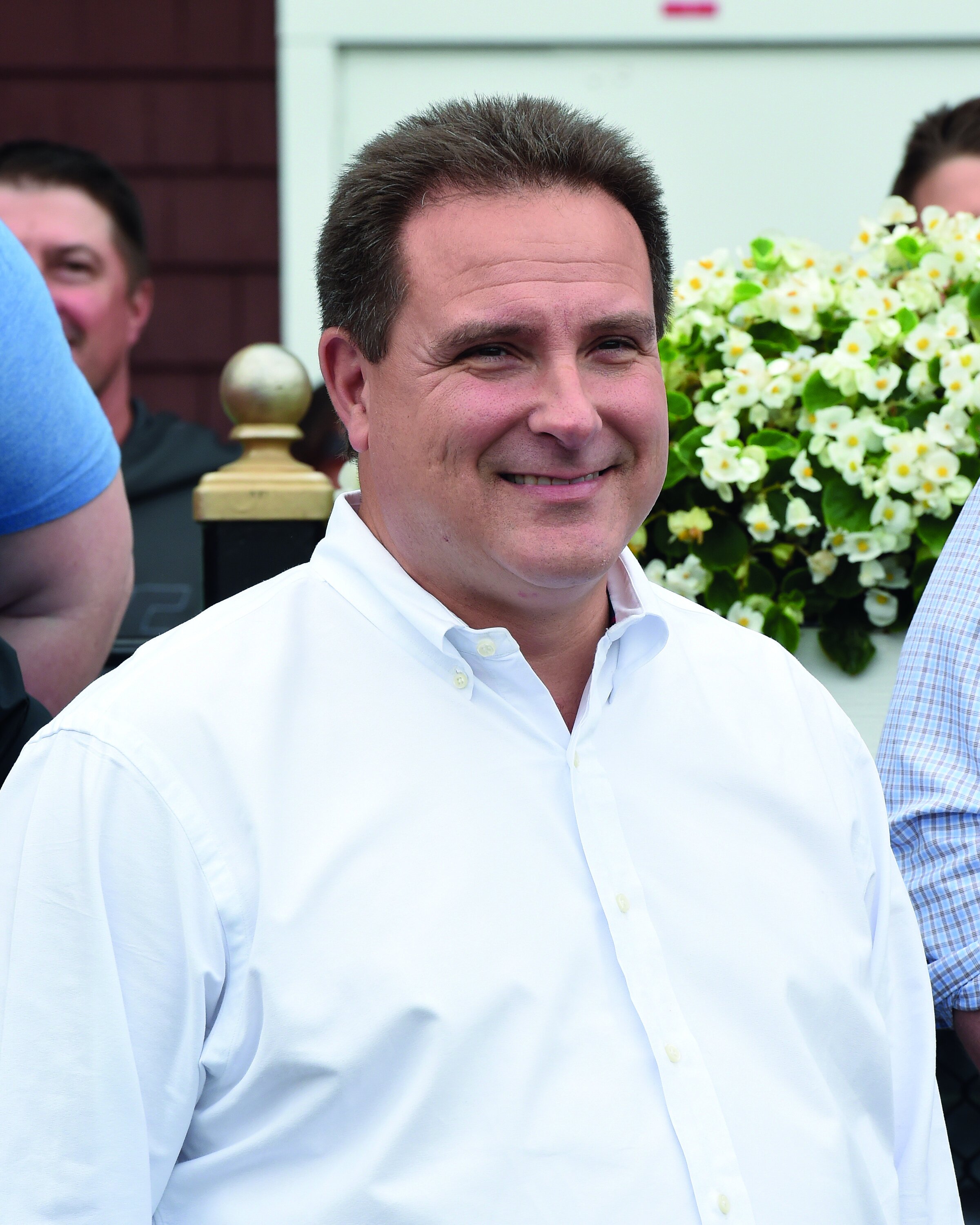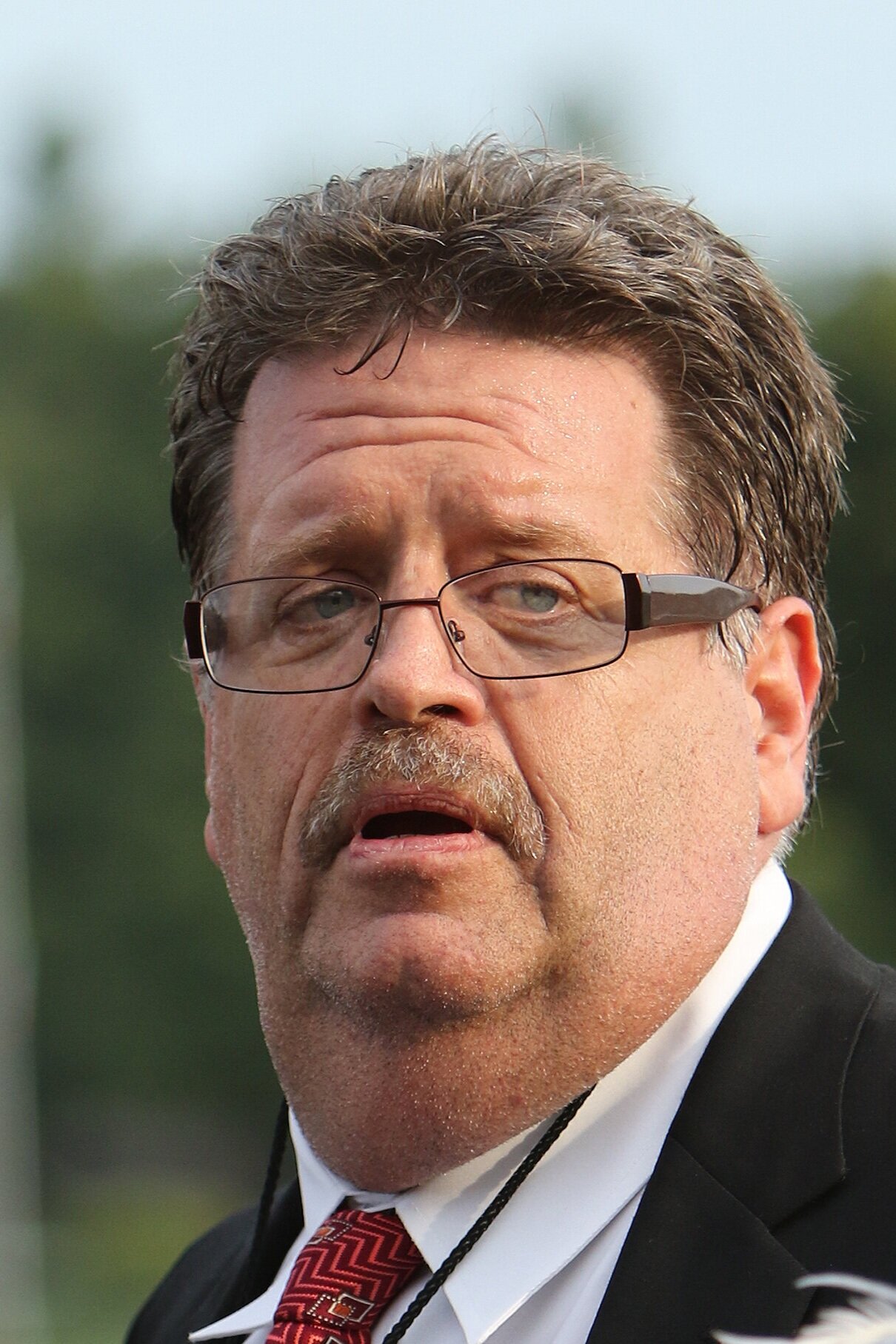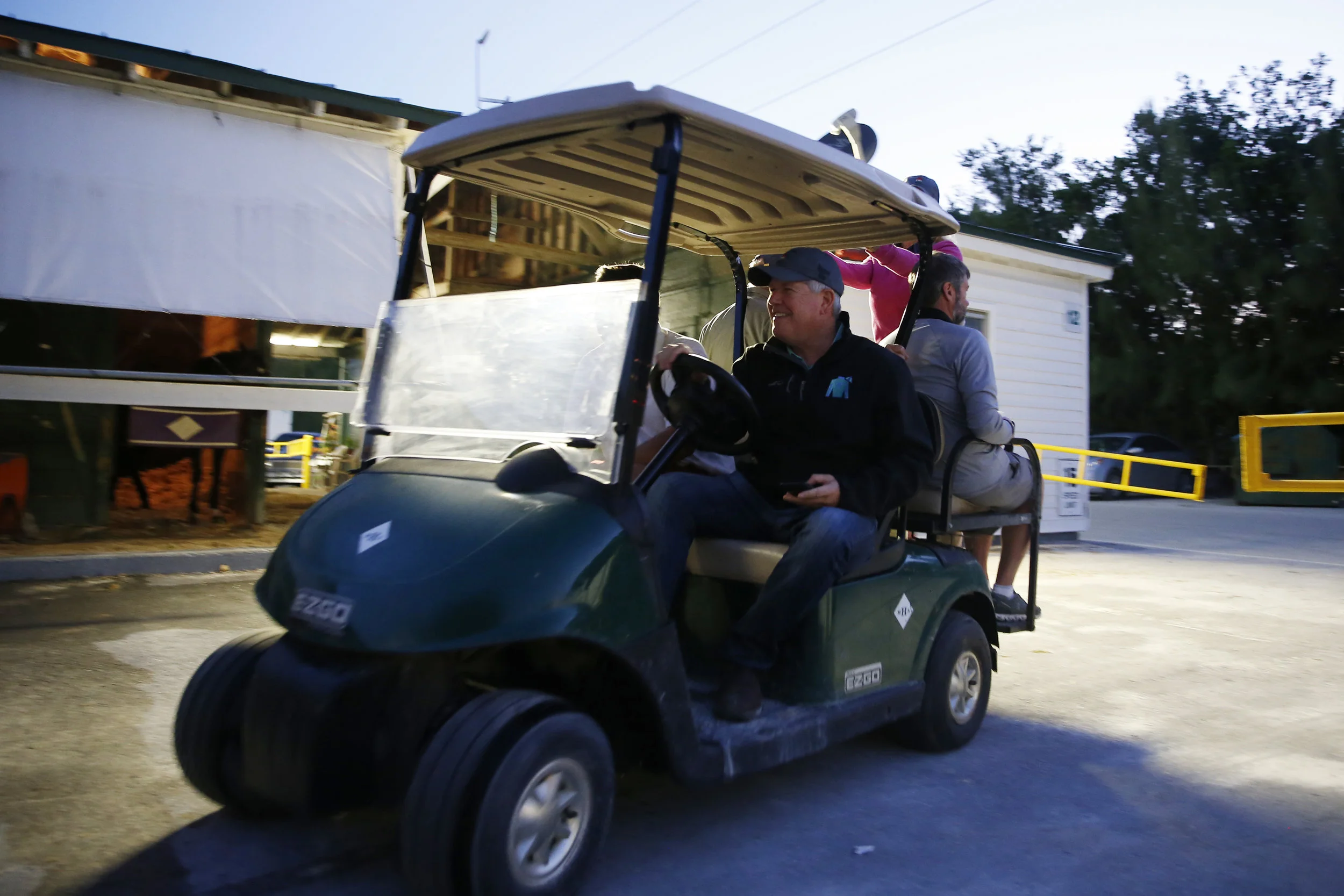#Soundbites - how can trainers improve racing's public perception / image?
Article by Bill Heller
Bruce Levine
Can you ask an easier question? The only thing I can say is, if more people came out in the morning to see a horse train, you’d get a better handle and feel on how fragile the horses are. When you run horses, injuries are going to happen. You watch football players, they don’t put them down, but they cart them off. Horses’ ankles are so much smaller. It’s a fact of life.
D. Wayne Lukas
I think that they should probably interact more with the general betting public and the fan base, and let the general betting public and fanbase know there are some real sound people training. Let them get to know personalities.
Richard Mandella
I would say that you have to deal with the public when you have a chance to, to explain what we do. Be as open as possible so we don’t keep training a secret, so that the public can appreciate what we do. It’s a very important question because we need to do everything we can to gain respect for the sport that we seem to be losing.
Mark Hennig
Do things the right way would be one thing. I think there’s a lot of negativity, especially in social media, but there are positives, too. Trainers can explain what goes on every day. We have so much love and care and admiration that goes into these horses. I don’t know if we do a good job getting that message out.
Mike Stidham
I think the most important thing is every trainer taking responsibility for his job to do the very best they can to keep the horses safe and healthy. Always do the right thing. Keep the horse first. Make the horse the priority. Because I think when you’re out in the public with people who don't know racing, they worry about horses dying. They see horses die. As trainers we don’t have total control over that, but we can make a difference by doing the right thing for the horses, giving them the benefit of the doubt. To me, that’s the most important thing.
Mike Trombetta
You know, obviously that’s a good question. I think the answer to that is of all the things that happen in racing, the good majority are upbeat stories. In our world, too much emphasis is on the negative. Just watch the news. It’s horrible to watch. If something bad happens, you hear about it five minutes later. With racing, there’s a million good stories we never hear about. It’s not talked about quite enough. Perception is reality.
Tim Hills
Be more accessible to the people at the races and the media. We’re always full disclosure. We’re not hiding anything. We love what we do and we want to share it with anyone who wants to know.
#Soundbites - How much do you rely on veterinarians’ input for day-to-day decisions?
By Bill Heller
Mark Hennig
I wouldn’t say I rely on them on a day-to-day basis. We evaluate horses after a workout. But day to day, there seems to be a horse we want to look at. If a rider has any kind of negative comment, we make a point of going over those horses at the end of the morning. And we also go over the previous day's workers. We do have vets if there is a soundness issue or a horse needs scoping.
Tim Hills
I’m married to a vet, Laine, so I very much respect their opinions. I’m not old-school. They only get a vet when the horse is near death.
Ron Moquett
Very little after what I’ve seen over the years. When I first started, the vets and blacksmiths weren’t allowed on the track until after the break. I use them for preventive stuff, taking care of the joints, because we’re asking these horses to do strenuous things. Other than that, I don’t rely on them at all.
Bret Calhoun
We use them when things get beyond our control—things like X-rays, ultrasound, scoping, things like that. Obviously we depend on them quite a bit for that. As far as day to day, we know our horses better than them. We see them every day. When there’s a change in them, obviously I bring them [vets] in for consultation. We use them for routine stuff like Lasix medications. Other than that, we don’t use them that much.
Mike Maker
Basically, we use a veterinarian as far as illness and lameness, and that’s about it.
Cliff Sise Jr.
I go over the horses myself pretty good. But sometimes a veterinarian’s suggestions are good, too. We have to rely on them in California. They check them for workouts; they check them for races. So we rely on a good vet.
Mark Glatt
How much do I rely on them? Because of the rules now, the veterinarians are heavily involved. Most of these horses are checked twice a week.
Eoin Harty
It all depends. You might go through a period where you only have a vet come to scope or vaccinate a horse. Then you go through a rash of bad luck, and you might have a veterinarian come for seven, eight days in a row. But the more experience you have, the less you rely on veterinarians. You see so much over the years. You can’t buy that education.
#Soundbites - If you could add one Breeders’ Cup race, what would it be? Or are there enough Breeders’ Cup races already?
By Bill Heller
If you could add one Breeders’ Cup race, what would it be? Or are there enough Breeders’ Cup races already?
Dale Romans
It’s a good question. Let me think for a minute. A filly and mare turf mile. I just think it would be a good race.
************************************
Al Stall
I’ve never thought about that. I’m not sure. It seems like they have it covered. I think it’s fine as is.
************************************
Craig Dollase
Craig Dollase
A straight three-year-old dirt race for fillies and one for the boys. That might be something. They don’t have that. With the situation right now, all the three-year-olds are backed up because of the virus and are racing in the fall. See if that sparks some interest moving forward. It would produce big fields.
*************************************
Richard Mandella
Richard Mandella
I remember the first one in one day. It seemed more important with one day. But racing needs desperately to get people involved in it and interested in it. If they want to add another race, have one and then have an auction afterwards. You put up a good purse of $300,000, $400,000 or $500,000. And then anyone can bid on the winner. You would have to have the money in an account and a rule so that the current owner couldn’t bid and keep his horse. You make it the last race of the day. Get the winner, get the bids, and anyone could get the horse. If you did it once, it might start a following. It might get the public involved.
*************************************
David Donk
I think they pretty much cover all the divisions. I think it would dilute the quality. I think what they have is sufficient because of the horse population in the country. It’s an owner issue, not a trainer issue. At the end of the day, the buck stops there.
*************************************
D. Wayne Lukas
David Donk
I think I’d leave it alone. I don‘t think there’s any other race that would have much significance. I might change the format on Friday and Saturday. I think they definitely need to beef up the Friday card.
************************************
Michael Matz
Michael Matz
Are there any divisions left? I think it’s enough the way it is. You don’t want to water it down anymore than it already is.
*************************************
Mark Hennig
They keep changing it so often. They’ve got 14 now. Allowing races strictly for three-year-olds would make the Classic a disaster. Most years, the older horses have been depleted, and the three-year-olds have done well. To me, do a turf mile for fillies and mares just like the boys. …
****************************************
CLICK HERE to return to issue contents
ISSUE 57 (PRINT)
$6.95
ISSUE 57 (DIGITAL)
$3.99
WHY NOT SUBSCRIBE?
DON'T MISS OUT AND SUBSCRIBE TO RECEIVE THE NEXT FOUR ISSUES!
Four issue subscription - ONLY $24.95
Mark Hennig - Profile
By Jeff Lowe
The launch of Mark Hennig's training stable in 1993 was a racing rarity with its immediate impact in major races. He parlayed a strong start into one of the most influential training jobs of a generation, helping to develop Edward P. Evans' stable into a powerhouse on the track and a feeder for a vaunted broodmare band.
As the tide began to change in the mid-2000s, Hennig had to rebuild with owners like Lee Lewis who supported him from the start but carried far fewer horses than the dozens he had received every year from Evans, and from developing new clientele even as the owner ranks contracted significantly in North America.
"I was very fortunate to have the kind of horses I did starting out," said Hennig, whose first stakes winner, Star of Cozzene, swept the Gr1 Arlington Million and Man o' War Stakes along with the Gr2 Caesar's International and Manhattan Handicap in 1993. "There are a lot of trainers and owners who are capable of picking out nice horses and training them too. It's all about having the access to them. I have had years when I didn't have the access to them and I think it's shown. It's no different than a basketball coach. It's a lot easier to coach a team with Lebron James on it than to coach a team with me on it."
Hennig, 54, always seemed to have at least one marquee horse he could count on, like Wesley, a striking gray who captured the Gr2 National Museum of Racing and Hall of Fame Stakes at Saratoga in 2008; and the fleet filly Merry Meadow, who clicked off four Graded stakes triumphs in 2014 and '15 in the filly and mare sprint division.
Little by little, depth and quality increased and Hennig, based at Belmont Park and Saratoga in the spring and summer and Gulfstream Park in the winter, now sits in a plumb position. His 2018 season was his best by purse earnings in 10 years and featured a return to the Triple Crown trail with the meteoric Strike Power, who sped to victory in the Gr3 Swale Stakes at Gulfstream Park around one turn in just his second career start. He then finished a solid second in the Gr2 Fountain of Youth Stakes over a route of ground, only to struggle after getting caught up in an intense pace duel in the Grade 1 Florida Derby.
In 2019, Hennig is back on the Triple Crown trail with Bourbon War, a colt with a resumé more similar to his trainer's previous classic runners Personal Hope and Eddington.
Personal Hope was one of the first horses Hennig received when he went out on his own in late 1992, after five years as an assistant to D. Wayne Lukas. Hennig was there for a nice stretch of heady days for Lukas Racing, with Hall of Famers Winning Colors and Lady's Secret and Horse of the Year Criminal Type all in the shedrow. Lee Lewis had horses with Lukas at that time, as did the Team Valor syndicate led by Barry Irwin and Jeff Siegel, who were so impressed with Hennig that they presented him with an offer that would spark his own career. At age 27, Hennig became the private trainer for the Team Valor roster, with the caveat that he could also oversee six horses for other owners. Lewis sent him Personal Hope, who had started once for Lukas as a juvenile in 1992 before going to the sidelines with an issue.
Hennig also filled the half dozen "public stalls" with horses owned by Evans. Between the three sources—Team Valor, Lewis and Evans—Hennig got off to a momentous beginning. While Star of Cozzene starred in the turf division for older males, Personal Hope immediately landed a dirt maiden win at Santa Anita and would go on to glory in the Gr1 Santa Anita Derby in 1993 before finishing fourth in the Kentucky Derby.
Star of Cozzene tore through that same season with six Graded stakes wins and developed an epic rivalry with Claiborne Farm's homebred Lure, who would beat the Team Valor runner into second in both the Gr2 Turf Classic on Derby Day and the Gr3 Dixie Handicap on the Preakness card, before Star of Cozzene turned the tables with victories over Lure in the Manhattan at Belmont and the Caesars International at Atlantic City. They were both entered for another showdown in the Arlington Million, but after a spate of heavy rain, Lure was scratched and Star of Cozzene strolled to a 3 1/4-length victory at 4-to-5 odds.
"Star of Cozzene was a real hard-trying horse," Hennig said. "When it was soft, there was no beating him. We had Star of Cozzene with Wayne and he was a nice horse, not beat far in the Breeders' Cup Mile. After that, Team Valor sent him to Francois Boutin in France, and when he came back it looked like it just didn't agree with him. He was light and had tailed off. It was an amazing turnaround once he got back here and started flourishing. The one winter we had him in California it rained a lot and that really got his season rolling. He went back East and had that great series with Lure. Where Lure was dangerous on firm turf, Star of Cozzene was just terrific on soft turf; and when he won the Arlington Million, it had just rained and rained, and he won it easily. We had a lot of fun with him."
Growing up in central Ohio, Hennig spent much of his high school years on the backstretch of Beulah Park outside Columbus, where his father, John, was a top-flight trainer who would occasionally make his presence felt at Keeneland, Churchill Downs, and in South Florida.
The elder Hennig ended up with a barn at Churchill with a staff that not only included his son, Mark, but also eventual trainers Kiaran McLaughlin and George Weaver. It was there that McLaughlin met Mark Hennig's sister, Letty. They have been married for more than 30 years.
"Growing up, we would all work in the barn," Hennig said. "We would go in real early in the morning and, before I had my driver's license, I would get a ride home and get ready real quick and go to school. I would go back there after school and maybe run a few horses. The work ethic was instilled in all of us that way. It was about good horsemanship and working hard. When I went off to Ohio State for college and came back, my dad encouraged me if I was going to be in the horse business and wanted to train horses that I should work for some other outfits. I think that is the most unselfish thing any father could do for their son. He introduced me to Jack Van Berg, and I worked for him for a while and then I went to work for Wayne after that. I was so lucky to have that kind of foundation for my career."
TO READ MORE —
BUY THIS ISSUE IN PRINT OR DOWNLOAD -
Triple Crown 2019, issue 52 (PRINT)
$6.95
Triple Crown 2019, issue 52 (DOWNLOAD)
$3.99
WHY NOT SUBSCRIBE?
DON'T MISS OUT AND SUBSCRIBE TO RECEIVE THE NEXT FOUR ISSUES!
Print & Online Subscription
From $24.95



















